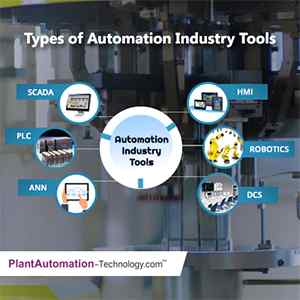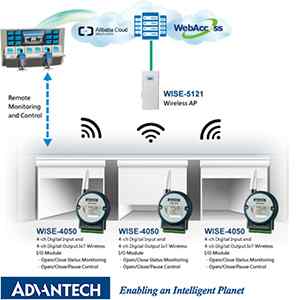Different Types Of Automation Industry Tools

Introduction:
Automation plays a major role as it helps to facilitate a transaction. Automation industry tools have been used in banking and finance institutions to help clients by providing basic needs when they require services from companies. On the other hand, hospitals and other medical fields use automation tools as they help to provide the best treatment to their respective patients. Due to this reason, industrial automation system has been conceptualized.
Moreover, automation industry tools include a wide range of equipments for custom testing, process automation and industrial automation. They help to create digital and mechanical alternatives to solve problems in the manufacturing process. These tools also help in quality control and product development. Now-a-days, businesses require automation industry tools to save money and time. Automation tools also bring a lot of effectiveness and efficiency and this is the reason why these tools have been used efficiently these days.
Below are the types of automation industry tools:
- Supervisory Control and Data Acquisition (SCADA) – Find new ways to operate faster
- Programmable Logic Controller (PLC) - Multiple input and output arrangement
- Human Machine Interface (HMI) - Control industrial automation equipments
- Artificial Neural Network (ANN) – Responsible in processing information
- Distributed Control System (DCS) – Monitoring networks
- Robotics
Supervisory Control and Data Acquisition (SCADA) – Find new ways to operate faster
Supervisory Control and Data Acquisition (SCADA) is a type of application that gets operating data about a system to control and optimize a system. However, the application can be a petrochemical distillation process, a water filtration system, a pipeline compressor and so on.
All businesses depend on the requirement for enhancing return on assets through operational excellence. Staying ahead of the competition means you can find ways to operate leaner and faster.
Programmable Logic Controller (PLC) - Multiple input and output arrangement
Programmable Logic Controller (PLC) showcases a great impact on automation. As the name indicates; it is a programmable logic controller. We can control the devices and can easily switch from one process to other process through it. It is possible because you can program it logically and thus it gets the name programmable logic controller. You can program as well as you can control using it. It is majorly designed for multiple input and output arrangements and it can withstand extreme temperatures with resistance to vibration and impact.
Human Machine Interface (HMI) – Helps to Control industrial automation equipments
The Human Machine Interface (HMI) includes the electronics that are required to signal and control the state of industrial automation equipment. However, these interface products can range from a basic LED status indicator to a 2-inch TFT panel with touch-screen interface. To use HMI, requirements include robustness, resistance to water, dust, and moisture, a wide range of temperatures and, in some environments. These interfaces must provide Ingress Protection (IP) ratings up to IP65, IP67, and IP68.
Artificial Neural Network (ANN) – Responsible in processing information
Artificial Neural Network (ANN) tool is also known as the neural network. It is more like a mathematical model and is responsible in processing information coming from biological networks. Structures of ANN can be changed based on both external and internal data fed into the learning phase of the system. Applications of this automation tool include financial applications and data mining.
Distributed Control System (DCS) – Monitoring networks
Distributed Control System (DCS) is one of the industrial automation system favored by several processes in the manufacturing industry. It contains one or more controller elements distributed in the system. Broad categories of application of DCS includes electrical power grids and generation plants; traffic signals, water management systems; environmental control systems; oil refining and chemical plants; pharmaceutical manufacturing; bulk oil carrier ships; and sensor networks.
Robotics
Robotics have been used everywhere around us. Right from surgery robots to entertainment robots, they help people to complete complex tasks. They have made our lives so much easier and improved its quality. They can be used in performing various application tasks such as allocating, painting welding, repairing and so on. The role of industrial robotic systems play in the production process is vital as their work range from assembly to internal treatments to testing.
Conclusion:
These tools in industrial automation systems can create a great impact on various facets of the manufacturing process. They help to reduce lead time while producing higher product quality. These automaton industrial tools are being effectively used for monitoring social media campaigns.
Also Check: A Brief Guide on the Types of Automation











